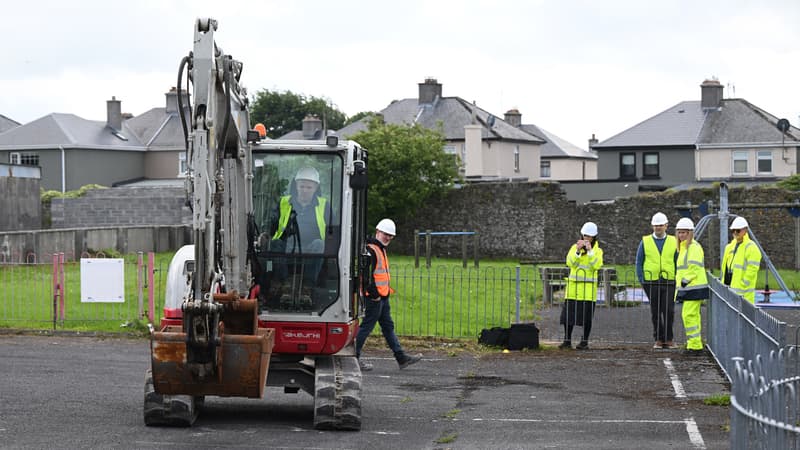They were called Kathleen, Mary or Joseph … The first exhumations of the 796 children buried without burial between 1925 and 1960 in a religious house in Ireland began this Monday, more than ten years after the discovery of the site.
After completing in mid -June, the perimeter of the old septic tank of St Mary of the good rescue sisters in Tuam, in the west of the country, Irish experts will officially begin excavation.
The objective is to find, analyze, identify if possible and bury the remains of children with dignity, including many newborns. These operations, carried out with the help of experts from Colombia, Spain, the United Kingdom, Canada and the United States, must last two years.
DNA samples of about thirty relatives have been collected, a process that must be extended in the coming months to gather as much genetic evidence.
A “fierce fight” for the truth
This search, which aims to launch these 796 children of oblivion in 2014. At that time, Catherine Corless, a local historian, revealed detailed evidence that attests to her death in this home. His research, which causes a crash wave in the country and has a global impact, leads to a macabre discovery: a common well.
“There was no burial record, no cemetery, statue, or cross, absolutely nothing,” said the historian, describing his work as “hard fight.”
“Nobody wanted to listen,” he told AFP. “I begged him: ‘Take out these babies from these sewers, it offers the decent Christian burial that was rejected!'”
Things move in 2021. A National Commission for Research on Maltrate imposed in these homes underlines the levels of alarming children’s mortality in these institutions, where 9,000 children died. He also established that 56,000 single women and 57,000 children went through 18 homes of this type between 1922 and 1998.
The institution was shaved in 1972
At that time, pregnant women outside of marriage were locked in these homes under the leadership of the Irish state and the powerful Catholic Church, which often handled them together. They gave birth there before being separated from their children, often delivered to adoption.
“These children were denied by the slightest human right during their lives, as well as their mothers, and were deprived of dignity and respect in death,” said Anna Corrigan, two brothers members can be buried in Tuam.
The institution of good help sisters shaved in 1972 and gave way to a subdivision. The septic well remained intact.
It was not until 2022 that a law officially authorized excavations. And in 2023, a team was finally named to perform operations in Tuam. The slowness of the process has been denounced several times by relatives of the victims. In spite of everything, at 71, Catherine Corless is delighted with this new advance, which she would have, for her own admission, “he never thought about seeing.”
Source: BFM TV


